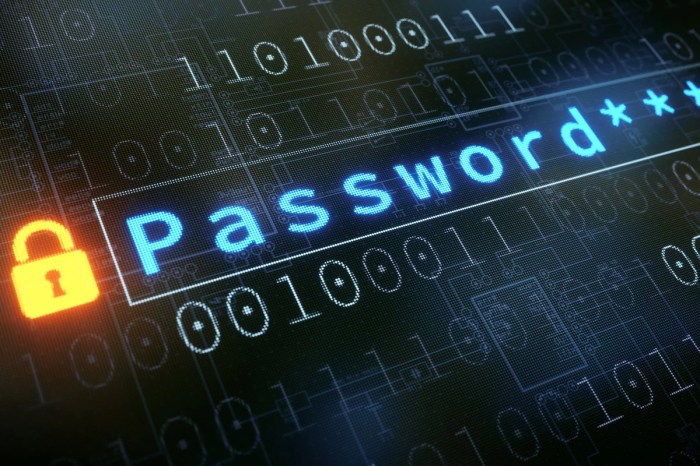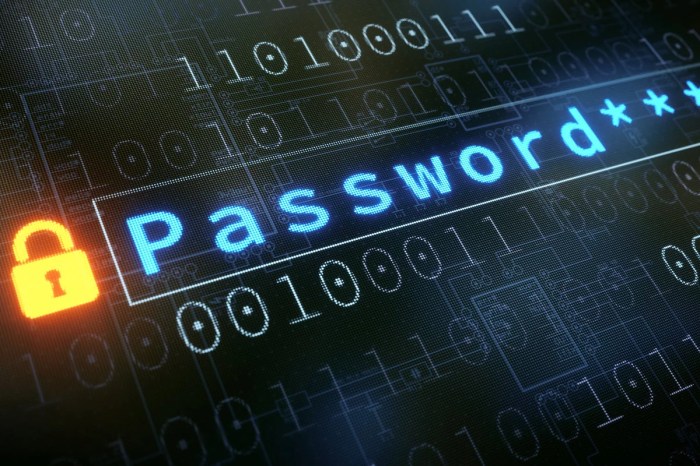
How Do Password Managers Work?
How do password managers work? They’re like digital vaults for your online life, keeping all your logins and passwords safe and secure. Imagine trying to remember dozens of complex passwords for every website you use – a nightmare, right?
Password managers eliminate this struggle by storing all your credentials in one encrypted location, accessible with a single master password. This not only saves you from the frustration of forgotten passwords, but also enhances your online security by preventing you from reusing weak passwords across multiple accounts.
But how do they actually work? Password managers use advanced encryption algorithms to scramble your passwords, making them unreadable to anyone except you. They also offer features like automatic password generation, autofill, and two-factor authentication (2FA) to further strengthen your digital defenses.
Think of them as your personal security guards, always vigilant in the digital world.
Introduction to Password Managers
In today’s digital age, we are constantly bombarded with online accounts, each demanding a unique and strong password. This overwhelming number of passwords can be a daunting task to manage, often leading to compromises in security and convenience. Password managers are a powerful tool that can help you navigate this challenge and safeguard your online identity.
The Challenges of Managing Passwords Manually
Manually managing passwords can be a frustrating and risky endeavor. It’s easy to forget passwords, reuse them across multiple accounts, or write them down in an easily accessible location. This approach not only compromises your security but also makes it difficult to keep track of your login credentials.
- Forgetting Passwords:The sheer volume of passwords can make it impossible to remember them all. This often leads to users resorting to weak passwords or repeatedly resetting their accounts.
- Reusing Passwords:It’s common to reuse passwords across multiple accounts, making it easy for hackers to gain access to all your accounts if one is compromised.
- Writing Passwords Down:Storing passwords on paper or in easily accessible digital files is a significant security risk. Anyone with access to these notes can easily steal your login credentials.
The Benefits of Using a Password Manager
Password managers offer a secure and convenient solution to the challenges of managing passwords manually. These tools can help you generate strong, unique passwords for each of your accounts, store them securely, and automatically fill them in when you need them.
- Strong Password Generation:Password managers can generate complex, random passwords that are virtually impossible to guess. This significantly strengthens the security of your online accounts.
- Secure Storage:Password managers use advanced encryption techniques to protect your passwords. Even if your device is stolen, your passwords remain safe.
- Auto-Fill Functionality:Password managers can automatically fill in your login credentials, saving you time and effort when accessing your accounts. This can be particularly helpful when dealing with long and complex passwords.
- Cross-Platform Compatibility:Most password managers offer apps for various devices, including desktops, laptops, smartphones, and tablets. This ensures you can access your passwords from anywhere.
- Two-Factor Authentication:Many password managers support two-factor authentication, adding an extra layer of security to your accounts.
How Password Managers Store Passwords

Password managers are like digital vaults that securely store your passwords, making it easier to manage and access them. But how do they ensure the security of your sensitive information? The answer lies in the way they store your passwords: through encryption.
Password managers are like those handy little notebooks we used to keep for important information, but much more secure. They encrypt your passwords, making them nearly impossible to crack, and remember them for you. Just like you might need a specific tool for crafting a xoxo heart clutch diy , password managers are essential tools for safeguarding your digital life.
With them, you can easily access your accounts without having to remember every complex password, keeping your online world safe and organized.
Password Encryption
Password encryption is the process of transforming your passwords into an unreadable format, making them incomprehensible to unauthorized individuals. Think of it like scrambling a message so that only someone with the right key can decipher it. Password managers employ sophisticated encryption algorithms to secure your passwords.
These algorithms use mathematical formulas to convert your passwords into seemingly random characters, known as ciphertext. This ciphertext is then stored in your password manager’s database.
Encryption is like putting your password in a locked box. The key to unlock the box is the encryption algorithm, and only the password manager knows this key.
Master Passwords and Their Role in Security
To access your encrypted passwords, you need a master password. This is the key that unlocks the encryption and allows you to view your stored passwords. The master password is the only password you need to remember, as it acts as a gateway to all your other passwords.The master password plays a crucial role in security.
It is the single point of access to your password vault. If someone gains access to your master password, they can unlock all your encrypted passwords. Therefore, it’s essential to choose a strong and unique master password and keep it confidential.
Different Encryption Methods Used by Password Managers
Password managers use various encryption methods to protect your passwords. Some common methods include:
- AES (Advanced Encryption Standard):This is a widely used encryption standard considered very secure. It employs a block cipher, meaning it encrypts data in fixed-size blocks. AES is used by many password managers, including LastPass and 1Password.
- RSA (Rivest-Shamir-Adleman):RSA is an asymmetric encryption algorithm, meaning it uses separate keys for encryption and decryption. It is commonly used for secure communication and digital signatures. Some password managers, like Dashlane, use RSA for key exchange and encryption.
- Blowfish:Blowfish is a symmetric encryption algorithm that is known for its speed and security. It is often used in password managers like KeePass.
The choice of encryption method can vary depending on the password manager. It’s important to research the specific encryption methods used by your chosen password manager to ensure they meet your security standards.
Password Manager Features and Functionality
Password managers are designed to simplify and enhance your online security by offering a range of features that go beyond simply storing your passwords. These features work together to provide a comprehensive solution for managing your digital identity and safeguarding your accounts.
Password managers work by storing your passwords in an encrypted vault, accessible only with a master password. This keeps your information secure, even if one of your accounts is compromised. The recent kimoji geddon takedown or shakedown highlights the importance of strong passwords and robust security measures.
Password managers can help you generate and manage complex passwords, ensuring your online accounts remain protected.
Autofill
Autofill is one of the most convenient features of password managers. It automatically fills in your usernames and passwords for you, saving you time and effort when logging into websites. This feature eliminates the need to manually type in your credentials, reducing the risk of errors and typos that can compromise your security.
Password Generation
Creating strong and unique passwords for every online account is crucial for security, but it can be challenging to remember them all. Password managers offer robust password generation tools that create complex and random passwords, making it virtually impossible for hackers to guess or crack them.
Secure Storage
Password managers store your passwords in an encrypted database, which is protected by a master password that only you know. This ensures that your passwords are safe from unauthorized access, even if your device is lost or stolen.
Two-Factor Authentication (2FA)
Two-factor authentication (2FA) adds an extra layer of security to your accounts by requiring you to provide two forms of identification when logging in. Password managers often integrate with 2FA services, enabling you to manage and store your 2FA codes securely.
Password managers work by storing your passwords in an encrypted vault, accessible only with a master password. It’s like having a digital safe for your online identities, except instead of remembering a combination, you only need to remember one strong master password.
Just like how I need to remember my password for my Super Bomberman R Online Switch account, a password manager helps you keep track of all your passwords without having to remember them all. This way, you can have unique, strong passwords for every account without stressing about memorizing them.
Security Audits
Security audits are a valuable feature that helps you identify potential vulnerabilities in your online accounts. Password managers can scan your saved passwords and alert you if any are weak, compromised, or reused across multiple accounts.
Comparison of Password Manager Platforms, How do password managers work
Password manager platforms vary in their feature sets, pricing, and ease of use. Some popular options include:
| Feature | LastPass | Dashlane | 1Password |
|---|---|---|---|
| Price | Free, Premium, Families | Free, Premium, Families | Free, Premium, Families |
| Autofill | Yes | Yes | Yes |
| Password Generation | Yes | Yes | Yes |
| Secure Storage | Yes | Yes | Yes |
| Two-Factor Authentication (2FA) | Yes | Yes | Yes |
| Security Audits | Yes | Yes | Yes |
Using a Password Manager Safely: How Do Password Managers Work
While password managers offer significant security benefits, it’s crucial to use them responsibly to maximize their effectiveness and protect your data. Just like any other security tool, your password manager is only as secure as the practices you employ. This section delves into best practices for creating strong master passwords, enabling multi-factor authentication, and securing your password manager account.
Creating Strong Master Passwords
Your master password is the key to your entire password vault. If it’s compromised, all your stored passwords are at risk. Therefore, creating a robust master password is paramount.
- Length:Aim for a minimum of 16 characters, ideally longer. Longer passwords are more difficult to crack using brute-force attacks.
- Complexity:Include a mix of uppercase and lowercase letters, numbers, and symbols. Avoid common patterns or easily guessable sequences.
- Uniqueness:Never reuse your master password for any other account. Create a unique and memorable password specifically for your password manager.
- Avoid Personal Information:Don’t use names, dates of birth, or other easily discoverable information. Hackers often target such patterns.
Enabling Multi-Factor Authentication (MFA)
Multi-factor authentication (MFA) adds an extra layer of security by requiring two or more forms of verification before granting access. This significantly reduces the risk of unauthorized access, even if your master password is compromised.
- MFA Methods:Password managers often offer MFA options like SMS codes, authenticator apps, or security keys. Choose a method that suits your security needs and preferences.
- Importance of MFA:Even if a hacker manages to obtain your master password, they’ll still need to bypass the MFA barrier, making it much harder to gain access to your password vault.
- Enabling MFA:Most password managers offer straightforward instructions on how to enable MFA. Refer to your password manager’s documentation for detailed steps.
Securing Your Password Manager Account
Beyond creating a strong master password and enabling MFA, there are additional steps you can take to enhance the security of your password manager account.
- Use a Secure Password Manager:Choose a reputable password manager with a proven track record of security and privacy. Look for features like end-to-end encryption and strong security practices.
- Regularly Update Your Master Password:While not strictly necessary, periodically updating your master password adds an extra layer of protection against potential vulnerabilities.
- Enable Two-Factor Authentication (2FA):In addition to MFA, some password managers also offer 2FA, which further strengthens your account security.
- Secure Your Devices:Use strong passwords, enable device encryption, and install security software on all devices where you use your password manager.
- Be Wary of Phishing Attacks:Never click on suspicious links or download files from unknown sources. Phishing attacks can trick you into revealing your master password.
The Future of Password Management
Password management is constantly evolving, with new technologies and approaches emerging to enhance security and user experience. These advancements aim to simplify the process of managing multiple passwords while mitigating the risks associated with traditional methods.
Biometric Authentication
Biometric authentication utilizes unique biological characteristics to verify user identity. This technology offers a more secure and convenient alternative to traditional password-based authentication. Biometric methods, such as fingerprint scanning, facial recognition, and iris scanning, are becoming increasingly prevalent in password management.
These methods leverage unique physiological traits to authenticate users, making it difficult for unauthorized individuals to gain access. For instance, a password manager might use fingerprint scanning to unlock the application, eliminating the need for users to remember complex passwords.
Passwordless Logins
Passwordless logins eliminate the requirement for users to create and remember passwords. These methods leverage alternative authentication mechanisms, such as one-time passcodes, security keys, or biometrics, to verify user identity. Passwordless logins offer enhanced security by eliminating the vulnerabilities associated with password reuse and credential theft.
They also simplify the login process for users, reducing the friction associated with traditional password-based authentication. For example, a user could authenticate to a website using a security key, which generates a unique code for each login attempt. This eliminates the need for a password, making it more secure and convenient.
The Impact of Emerging Trends on Password Security
The adoption of biometric authentication and passwordless logins has significant implications for password security. These trends contribute to a more secure and user-friendly password management landscape.
The shift towards passwordless authentication has the potential to significantly reduce the risk of password-related breaches.
By eliminating the reliance on passwords, these advancements enhance the security of online accounts. Biometric authentication methods, such as fingerprint scanning, provide a more secure and convenient alternative to traditional passwords.
Other Emerging Trends
- Multi-Factor Authentication (MFA):MFA adds an extra layer of security by requiring users to provide multiple forms of authentication, such as a password and a one-time code. This makes it more difficult for attackers to gain unauthorized access to accounts.
- Password Strength Evaluation:Password managers are incorporating advanced password strength evaluation algorithms to assess the security of user-generated passwords. These algorithms analyze the length, complexity, and uniqueness of passwords to identify potential weaknesses.
- Password Sharing and Collaboration:Password managers are enabling secure password sharing and collaboration features. This allows users to share passwords with trusted individuals or teams without compromising security.







